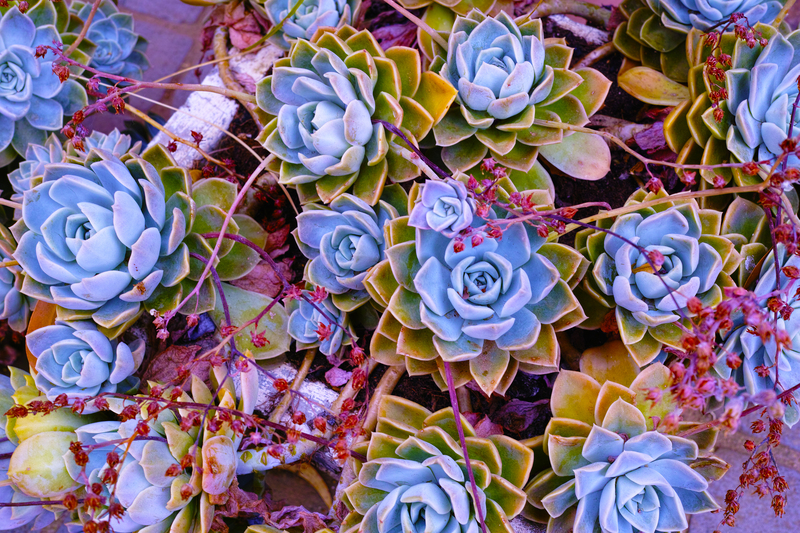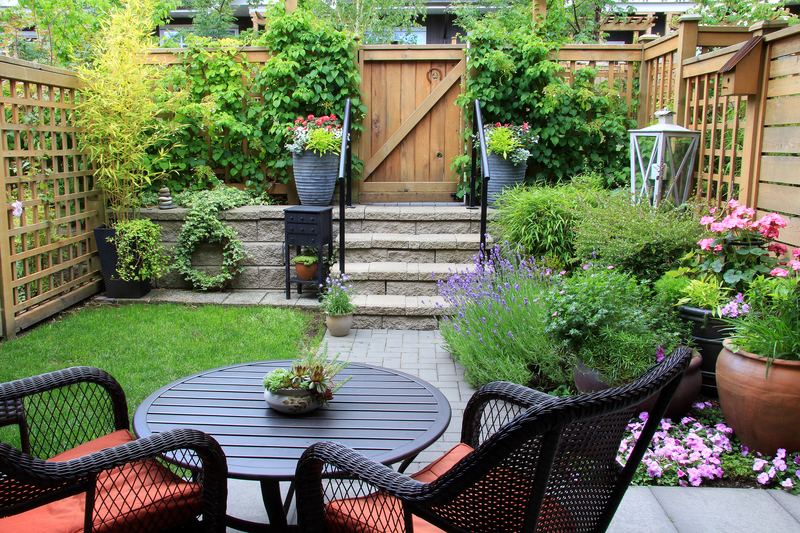Revolutionize Your Greenery with Vertical Gardens
Posted on 17/06/2025
Revolutionize Your Greenery with Vertical Gardens
Looking for a dynamic way to elevate your green space? Vertical gardens--also known as living walls or vertical greenery systems--are transforming how plant lovers bring nature indoors and outdoors. Whether you're seeking to freshen up a small apartment balcony, beautify your office, or create a stunning home facade, vertical gardening is a trend that's taking root for all the right reasons.

What is a Vertical Garden?
A vertical garden is a technique for growing plants on vertically suspended panels using hydroponics, soil, or other mechanisms. These innovative gardens can range in size from small kitchen herb towers to lush, multi-story building wraps. Living walls enable the cultivation of beautiful, healthy plants even where horizontal space is scarce.
The Evolution of Living Walls
While the concept of vertical planting has existed for centuries, modern vertical garden systems really began to flourish in the late 20th century. Visionary botanists and designers experimented with modular, sustainable designs, resulting in today's sophisticated offerings--where home gardeners and city planners alike can reap nature's multitude of benefits, even in concrete jungles.
Benefits of Vertical Gardens
Vertical gardens are more than just beautiful--they offer a host of practical benefits for your home, workplace, or community. Here's why you should consider embracing vertical gardening:
- Space Efficiency: Transform tiny balconies, urban rooftops, or bare indoor walls into lush plant havens without taking up valuable floor space.
- Improved Air Quality: Living walls naturally filter pollutants, purify the air, and reduce carbon dioxide, which is especially vital in urban environments.
- Thermal Regulation: Vertical greenery acts as insulation, regulating indoor temperatures, reducing energy costs, and providing natural sound barriers.
- Mental Health Booster: Studies demonstrate that being around greenery can reduce stress, increase productivity, and enhance creativity.
- Aesthetic Appeal: Vertical gardens offer dramatic, ever-changing visual interest that can refresh any space--indoors or out.
- Support Biodiversity: Providing a habitat for insects and birds, vertical gardens make urban environments friendlier to wildlife.
Selecting the Right Vertical Gardening System
Ready to transform your space? There are numerous vertical garden systems to suit your needs. When selecting a solution, consider the following factors:
- Location: Will your living wall thrive indoors or outdoors? Consider lighting, temperature, and exposure.
- Plant Preferences: Which plants fit your lifestyle and local climate--herbs, succulents, ferns, or flowering species?
- Maintenance: Some systems require more upkeep (like regular watering and pruning), while others are nearly self-sufficient with integrated irrigation.
- Budget: DIY modular kits can suit any budget, or you can invest in fully-installed designer living walls for a high-impact statement piece.
Popular Types of Vertical Gardens
- Pocket Systems: Felt or fabric pockets allow you to tuck individual plants directly into the vertical structure.
- Panel or Tray Systems: Pre-constructed panels or trays can be filled with soil or hydroponically grown plants, locking into place on your wall.
- Trellis and Climbing Walls: Use wires, nets, or lattice structures to guide vining plants as they grow up, creating a verdant vertical tapestry.
- Modular Towers and Shelving: Free-standing vertical columns and shelves offer flexibility and mobility, perfect for renters.
Plants Perfect for Vertical Gardens
The success of your vertical garden depends on picking suitable plants. To ensure health and longevity, choose species that align with your light, space, and water availability.
-
Foliage for Indoor Vertical Gardens:
- Pothos, Philodendron, Ferns, Spider Plant, Dracaena
-
Flowering Plants for Color:
- Bromeliads, Orchids, Anthuriums
-
Edibles:
- Herbs like mint, basil, oregano and small vegetables like lettuce and strawberries
-
Succulents:
- Echeveria, Jade Plant, Hens-and-Chicks
Designing Your Vertical Green Oasis
Designing a vertical garden is not just about function--it's an art! Here are key design tips to maximize your living wall's beauty and longevity:
- Mix Textures: Combine plants of varied leaf shapes, sizes, and colors for visual interest.
- Layer Heights: Use cascading species at the top and upright growers below for a lush, three-dimensional look.
- Group by Needs: Arrange plants with similar sunlight and water requirements together for healthier, low-maintenance growth.
- Use Focal Points: Incorporate statement pieces such as flowering plants or variegated leaves to attract the eye.
- Seasonal Variety: Rotate annuals or swap out plants seasonally to keep your vertical garden looking fresh year-round.
Styling Inspiration: Where to Add Vertical Gardens
- Balconies and Patios: Utilize vertical space for privacy screens or lush garden walls.
- Kitchen Walls: Create a living herb garden within arm's reach--fresh flavors all year long.
- Living Rooms: Transform an accent wall into a vibrant green backdrop that's sure to dazzle guests.
- Home Offices: Boost productivity and serenity by surrounding your workspace with natural greenery.
- Building Facades: Make an architectural statement with large-scale vertical planting systems on the exterior of your home or business.
How to Install and Maintain a Vertical Garden
Getting started with vertical gardening may seem daunting, but it can be broken down into easy steps:
- Pick Your Spot: Choose a wall or space with the right amount of light for your selected plants.
- Choose Your System: Select a vertical garden structure that suits your needs and budget--anything from DIY pocket hangers to prefabricated panels.
- Prepare the Wall: Ensure your surface can handle the weight, and install waterproofing barriers if needed for indoor projects.
- Install Irrigation (Optional): For larger or hard-to-reach living walls, set up a drip irrigation system for easy watering.
- Add Plants: Plant your selections, arranging them according to light and water requirements.
- Maintain Regularly: Monitor for pests, prune as necessary, and fertilize periodically to keep your greenery thriving.
Top Tips for Vertical Garden Care
- Monitor Moisture: Vertical gardens tend to dry out faster than traditional beds, so check soil moisture regularly.
- Feed Your Plants: Use a balanced, water-soluble fertilizer every few weeks during the growing season.
- Prune for Health: Remove dead leaves and spent blooms to encourage healthy growth and prevent disease.
DIY Vertical Garden Ideas for Every Budget
You don't need to be a landscape architect to create an eye-catching vertical gardening display. Here are some creative, budget-friendly ways to get started:
- Repurpose Wooden Pallets: Line a pallet with landscaping fabric, fill with soil, and plant your favorite flowers or herbs.
- Upcycle Old Shoe Organizers: Hang a fabric shoe rack on the wall and fill pockets with hardy herbs or trailing plants.
- Stacked Planter Pots: Arrange pots or containers at different heights--on shelves or in a pyramid--to transform empty corners into green havens.
- Gutter Gardens: Mount sections of rain gutter horizontally on walls or fences. Fill with soil and grow colorful annuals or lettuce.

Vertical Gardening: Sustainable, Stylish, and Smart
By adopting vertical gardens, you're not just adding beauty to your environment--you're making a sustainable choice. Living walls reduce your carbon footprint, contribute to biodiversity, and promote healthier living in urban areas. Whether you go for an impressive full facade or a petite indoor herb wall, vertical gardening enhances modern life in eco-friendly, innovative ways.
Why Vertical Gardens Are the Future
- Urbanization: With more people living in cities, vertical gardens reclaim lost green spaces, improving air quality and community well-being.
- Climate Change: Green walls protect buildings from extreme temperatures and filter urban air, helping cities adapt to environmental challenges.
- Food Security: Tower gardens and vertical allotments allow communities and homes to grow fresh produce efficiently and locally.
In sum, vertical gardens are more than a trend--they're a revolution in how we live with greenery. Whether you aspire to create a dramatic living wall as a designer showcase or to nurture a few pots of fresh basil in your kitchen, the possibilities are endless. Their beauty, environmental impact, and ease of implementation make vertical gardens the smart choice for revolutionizing your greenery--today and tomorrow.
Ready to Bring Your Walls to Life?
Experience the joy and benefits of vertical gardening. Pick your spot, gather your supplies, and let your creativity bloom upwards! Share your vertical garden journey, and inspire others to rethink green spaces for a healthier, more beautiful world.

